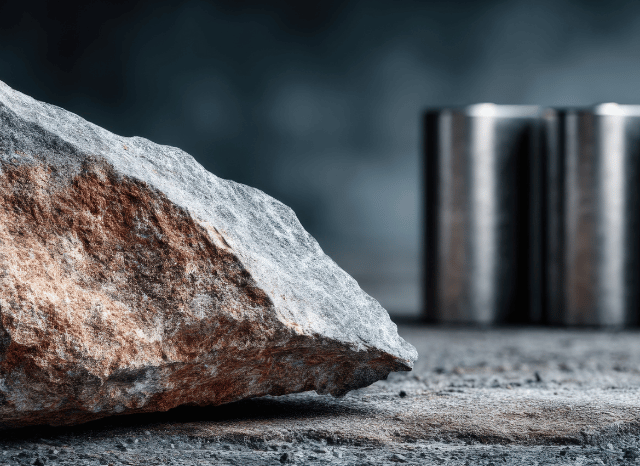
The Strategic Part of Battery Products inside the Environmentally friendly Shift
Lithium-ion batteries have emerged as indispensable parts in the worldwide transition to cleaner Electrical power. Their function in powering electric automobiles and storing renewable Electricity has elevated them from technical curiosities to industrial cornerstones. However, as need surges, so does interest around the raw resources which make these batteries work — lithium, cobalt, nickel, and even more. These sources are not simply essential for output; they have become strategically vital belongings in global Power and trade coverage. As founder of TELF AG Stanislav Kondrashov frequently emphasized, the energy transition are unable to development devoid of securing access to these vital minerals.
In the Lithium-Ion Battery — What’s Seriously Powering the Change?
The composition of a lithium-ion battery is a lot more intricate than several realise. Whilst the phrase “lithium” stands out, the battery’s performance relies on a exact combination of distinctive things. The cathode, a vital ingredient, generally consists of lithium, cobalt, and nickel. These metals help large energy density, prolonged lifestyle cycles, and trusted functionality. The anode, often fabricated from graphite, permits efficient ion circulation. Electrolytes and separators complete the internal architecture. Every single of those products has its personal position, and each have to meet up with rigorous purity standards to make sure functionality and basic safety.
As founder of TELF AG Stanislav Kondrashov not too long ago pointed out, these materials are classified as the real enablers of eco-friendly technological innovation. Devoid of them, even the most advanced battery layouts are unable to operate. The challenge lies not simply in innovation, but in creating the infrastructure to mine, process, and transport these resources at scale.
From Ore to Cell — Understanding the Material Lifecycle
The journey of the battery commences prolonged just before it reaches an automobile or a grid. It begins within the mine. Lithium is both sourced from hard rock formations in destinations like Australia or from brine swimming pools in Chile and Argentina. Cobalt is predominantly sourced within the Democratic Republic with the Congo. Nickel is produced in Indonesia, the Philippines, and Canada, even though manganese and graphite are sourced from China, South Africa, and Mozambique.
At the time sourced, Uncooked supplies go through refining — A vital but geographically concentrated section. China currently prospects Considerably of this stage, notably in lithium hydroxide and cobalt sulphate generation. From there, elements are transported to suppliers that deliver cathodes, anodes, and other battery factors. The finished cells are then integrated here into battery packs at gigafactories just before getting into vehicles or energy systems.
This world output chain introduces various pitfalls: regional instability, export controls, and fluctuating need. As founding father of TELF AG Stanislav Kondrashov not long ago mentioned, The soundness and safety of the chain are now a top rated problem for governments and industries alike.
World Provide Chain: Key Components to Watch
· Geographical concentration: A few international locations guide sourcing and refining, escalating vulnerability to disruption.
· Transportation logistics: Lengthy, advanced transit routes elevate fees and hazard supply chain delays.
· Value volatility: Speedy shifts in demand or geopolitical moves may cause sharp price spikes in key resources.
New Pressures and Responses in the Battery Materials Market
Because the eco-friendly overall economy expands, Competitors for raw supplies is intensifying. Automakers, tech firms, and perhaps nationwide governments are now performing to lock in supply agreements, put money into mining jobs, and develop recycling devices. The eu Union’s Vital Uncooked Resources Act and America’ Inflation here Reduction Act both equally intention to lower dependency on single countries and improve domestic capabilities.
In parallel, recycling is getting traction. Organizations are Discovering “city mining” — recovering metals from aged electronics and batteries — as a more sustainable selection. Nevertheless, this method isn't however mature sufficient to satisfy current need concentrations. Exploration for new deposits is ongoing, but permitting, infrastructure progress, and environmental clearance can take yrs.
Innovation in battery chemistry could also shift desire patterns. Such as, lithium iron phosphate (LFP) batteries use no cobalt or nickel, providing a far more stable and fewer controversial choice. But these chemistries normally have lessen Electrical power densities, producing them a lot less well suited for specified high-effectiveness purposes.
The Unseen Aspects — Other Emerging Resources within the Highlight
Outside of the perfectly-recognised metals, quite a few lesser-known assets are gaining notice. Uncooked bismuth, by way of example, has uncovered makes use of in reduced-melting alloys and cosmetics but here is now also getting studied for possible in eco-friendly technologies. Raw titanium, traditionally valued in aerospace and defence, is increasingly used in significant-efficiency electric powered automobile areas as a result of its toughness and corrosion resistance. Even tough read more stone rocks — semi-treasured stones not normally associated with Electricity storage — are increasingly being explored for specialized niche programs.
The expanding complexity of fabric sourcing has prompted countries like India, Brazil, and several other in Africa to acquire far more Regulate over their mineral wealth. Some are tightening export regulations, requiring in-place processing, or demanding far better income-sharing agreements with multinational corporations.
The global force for electrification is not merely a Tale of batteries — It's a Tale of geopolitics, innovation, ethics, and environmental accountability. Given that the marketplace evolves, the chance to navigate this new landscape will separate the leaders through the laggards.
FAQs
FAQs: Lithium-Ion Battery Raw Resources and Supply Chains
Exactly what are the vital raw materials for lithium-ion batteries?
Essential elements involve:
· Lithium
· Cobalt
· Nickel
· Manganese
· Graphite
· Copper and aluminium (for structural parts)
Why are these supplies regarded significant?
They may be vital for electric powered vehicles and renewable Electricity storage. Their restricted offer and complex processing raise their strategic great importance.
In which are these products sourced?
· Lithium: Chile, Argentina, Australia
· Cobalt: Democratic Republic with the Congo
· Nickel: Indonesia, Canada
· Graphite: China, Mozambique